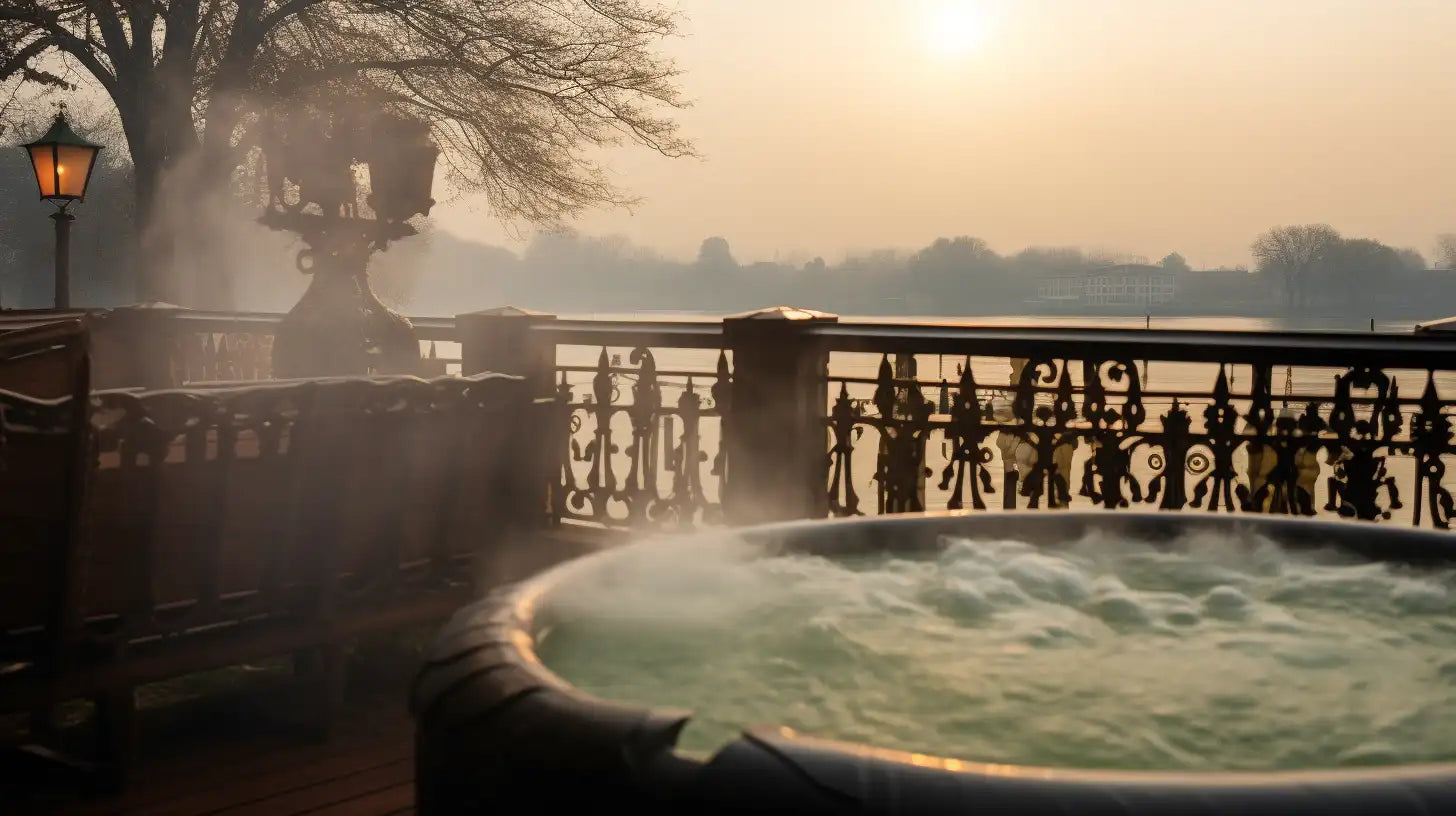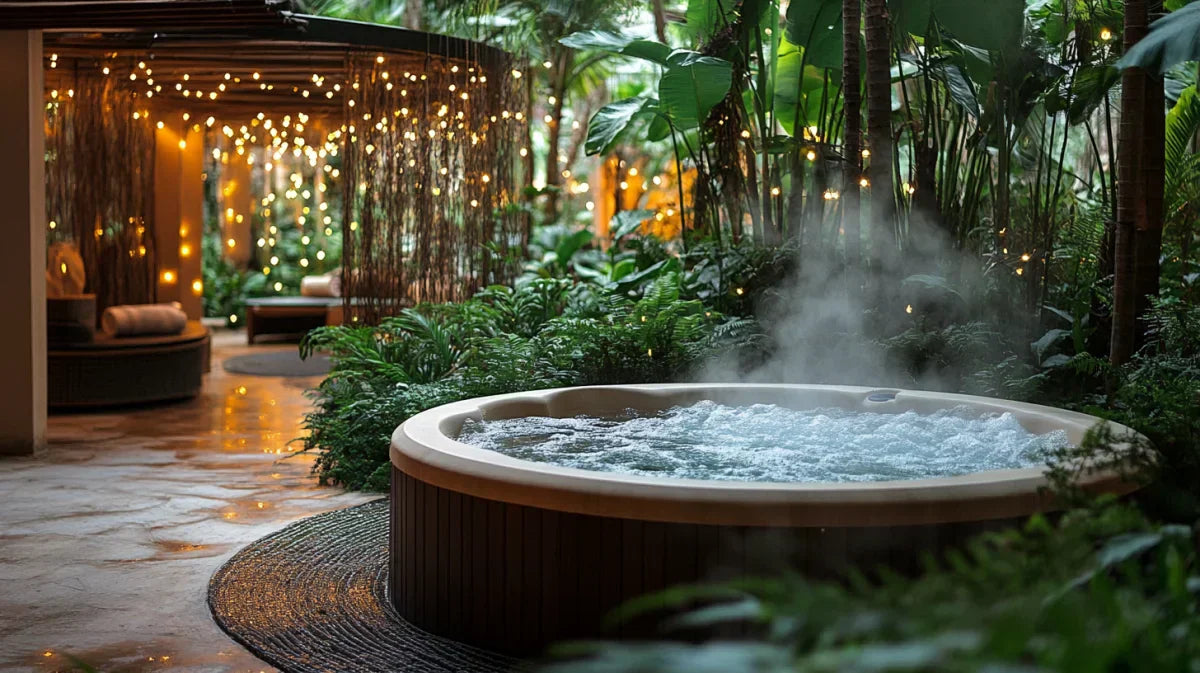Having an inflatable hot tub can be a great way to relax and unwind all year round. However, during colder weather, it can be challenging to keep the water nice and warm without wasting energy. That's where insulation comes in. Insulating your inflatable hot tub is one of the best ways to retain heat and reduce your energy costs.
In this comprehensive guide, we’ll cover everything you need to know about insulating your inflatable hot tub for maximum efficiency and cost savings. We’ll go over the different types of insulation, tips for choosing the right insulation, and step-by-step instructions for properly installing insulation.
Benefits of Insulating Your Inflatable Hot Tub
Here are some of the key benefits you’ll enjoy by insulating your inflatable hot tub:
- Saves money on energy bills - Properly insulating your hot tub prevents heat loss, meaning your heater doesn’t have to work as hard to maintain the desired temperature. This saves you money each month on energy costs.
- Maintains water temperature - Insulation traps heat in the water, keeping it nice and warm even when air temperatures drop. No more jumping into a cold hot tub!
- Allows use in cold weather - With good insulation, you can comfortably use your hot tub even when it’s snowing outside. The insulation prevents the cold air from rapidly cooling the water.
- Reduces pump noise - Insulation around the pump and heater muffles noise, making your hot tub more relaxing.
- Protects equipment - Insulation protects the heater, pumps and plumbing from extreme cold, dampness and other weather hazards.
Types of Inflatable Hot Tub Insulation
There are a few main types of insulation designed specifically for inflatable hot tubs:
Hot Tub Covers
Hot tub covers are one of the most important insulation components. A good cover seals in heat, prevents evaporation, and keeps out leaves, dirt and other debris.
Covers are made from dense foam or other insulating materials encased in vinyl or acrylic. Models designed for inflatable tubs have tapered sides to match the tub’s shape.
Some key features to look for include:
- Thick insulation - Around 5-6 inches is ideal
- Waterproof and weatherproof outer layer
- Lightweight yet durable construction
- Good seal with no gaps
- Handles for easy lifting
- Locking straps to secure the cover
Using a cover when the hot tub is not in use is crucial for preventing heat loss through the large surface area on top of the water.
Side Insulation Jackets
Insulated jackets wrap around the sides of the inflatable hot tub to provide all-over insulation coverage. They are designed specifically to fit the tapered shape of inflatable tubs.
Jackets are typically made from foam insulation encased in a waterproof and UV-resistant outer shell. Models with thicker insulation around 2-3 inches provide better thermal protection.
Quality jackets have Velcro flaps or zippers to snugly seal the insulation around the entire tub. Some even have a top flap or sleeve to accommodate the cover.
Using an insulating jacket along with a cover creates the optimal insulation envelope around an inflatable hot tub.
Pump Insulation
The pump and heater unit on inflatable tubs can be a major source of heat loss. Pump insulation protects this vulnerable equipment from the elements.
Pump insulation jackets feature foam or reflective layers inside a weatherproof shell. They have openings for pump hoses and vents for airflow. The insulation dampens pump noise in addition to preventing heat loss.
Floor Mats
Placing your inflatable hot tub on a ground insulation mat adds a layer of thermal protection underneath. It also smooths out any bumps and provides extra cushioning.
Insulated floor mats feature a foam core cushion sealed inside a waterproof vinyl cover. This blocks heat loss into the ground while protecting the inflatable tub’s floor.
Make sure to get a mat sized to fit the dimensions of your particular hot tub model.
Choosing the Right Insulation Products
To get the best results, use insulation products designed specifically for inflatable hot tubs. Here’s what to look for when selecting insulation components:
- Thickness - The thicker the insulation, the better it insulates. Aim for at least 2-3 inches of foam or reflective layers.
- Snug fit - The insulation must fit tightly against the tub with no gaps for air leaks.
- Waterproofing - Insulation needs a waterproof outer layer to withstand wetness and humidity.
- Durability - Long-lasting materials like vinyl and dense foam withstand wear and tear.
- Reflective layers - Radiant barriers and reflective foil boost insulation performance.
- Easy installation - Look for Velcro, zippers and other features that make insulation easy to install and remove.
Buying a hot tub insulation system allows you to get full coverage with covers, jackets, mats and pump insulation that are designed to work together. This provides the best protection.
Installing Inflatable Hot Tub Insulation
Installing insulation on your inflatable hot tub increases efficiency and extends your enjoyment of your spa. With the right products, installation is simple. Here are step-by-step instructions:
Preparing the Hot Tub
- Deflate and drain the hot tub if needed to access the sides and base.
- Clean the hot tub surfaces and surrounding area to create a clean foundation for insulation.
- Consider placing the hot tub on pavers or a gravel pad to elevate it off the bare ground.
- Have any punctures or leaks repaired prior to insulating.
Installing the Floor Mat
- Roll out the insulated floor mat on your prepared hot tub site.
- Cut the mat if needed to fit your specific tub size and shape.
- Position the hot tub in the center of the mat, ensuring it sits flat with no high or low spots.
- Inflate the hot tub fully so the bottom presses firmly and evenly on the mat.
Adding Side Insulation
- On deflated hot tubs, wrap the side insulation jacket around the tub, covering all sides.
- Zip or Velcro the jacket closed with no gaps.
- Use the attached straps or tape to secure the bottom of the jacket to the floor mat.
- Fully inflate the hot tub so the sides press snugly against the insulation.
- On already-inflated tubs, open the Velcro seams of the side jacket and place it around the tub.
Insulating the Pump
- Slip the pump insulation jacket over the pump housing.
- Adjust as needed to allow hoses and vents to pass through.
- Secure the insulation jacket in place with straps or tape.
Adding Hot Tub Cover
- After insulating the sides and pump, place the hot tub cover on top.
- Ensure it forms a tight seal all around the tub.
- Lock the cover straps to secure it from wind lift.
Your inflatable hot tub is now fully insulated and ready to keep the heat in! Follow the same steps in reverse order when removing insulation for summer months.
Tips for Maximizing Hot Tub Insulation
To get the best performance from your hot tub insulation, keep these tips in mind:
- Completely cover the tub whenever not in use.
- Check insulation for gaps and leaks regularly.
- Use a cover lifter to avoid dragging the cover and damaging the insulation.
- Consider adding extra insulation like foil bubble wrap to any uninsulated areas.
- Keep filters clean and replace as needed so the pumps don't have to work harder.
- Turn down the thermostat to save energy in cooler weather.
Improve Comfort and Efficiency
Insulating your inflatable hot tub is one of the best investments you can make. The proper insulation makes your hot tub more affordable to operate and enjoyable to use in any season.
Using the tips in this guide, you can choose optimal insulation products and install them for maximum energy savings and comfort. With the right insulation system, you’ll be ready to relax in your spa no matter the weather outside!
Frequently Asked Questions
Should I insulate my inflatable hot tub in the summer?
In most cases, you can remove the insulation during summer months. Insulation helps retain heat in colder weather but can cause the water to get too hot in the summer. Just be sure to completely cover the hot tub when not in use to protect it from UV damage.
How long does hot tub insulation last?
With proper care, hot tub insulation should last 2-3 years. Check for deterioration of the waterproof outer shell, damage from UV rays, and gaps where air can get in. Replace individual insulation pieces as needed when they become worn.
Should I insulate the bottom of my inflatable hot tub?
Yes, an insulated floor mat under the hot tub helps reduce downward heat loss into the ground. This retains more warmth in the water.
Can I make my own hot tub insulation?
It's best to purchase insulation products specifically designed for hot tubs. The materials are waterproof, reflect heat, and fit snugly. Attempting homemade insulation may not achieve adequate thermal protection.
How do I know if my hot tub insulation needs replacing?
Signs your insulation needs replacing include water absorption, mold or mildew, damaged areas, gaps allowing air loss, and pieces that don't fit snugly anymore. Your energy bills may also increase as insulation loses effectiveness.
Should I insulate my above-ground hot tub?
Yes, above-ground hot tubs benefit greatly from insulation, especially because their elevated walls are exposed to more cold air. Use a fitted jacket and floor mat to seal in heat.
Can I use regular foam as hot tub insulation?
It's best to use insulation designed for prolonged water exposure and humidity. Regular foam may absorb moisture over time and disintegrate. Opt for waterproof insulation like closed-cell foam board.
How much does it cost to insulate an inflatable hot tub?
A full insulation system with a cover, side jacket, pump insulation and floor mat typically costs £500-£900 depending on hot tub size and insulation thickness. High-quality insulation pays for itself over 1-2 years of energy savings.



